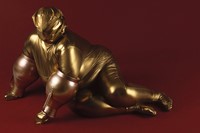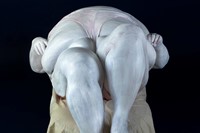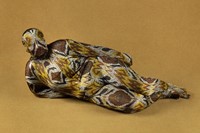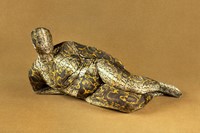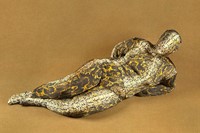Published by Baron, Pinar Yolaçan’s new book explores the female body through the lens of art history, considering the limits of these representations while offering alternative ways of seeing
The photographs in Mother Goddess, a new book of work by Pinar Yolaçan, exist at a strange juncture; between time, and between forms. At first glance, these images of women in elaborate costumes don’t look like photographs, but sculptures. Yolaçan reveals that, when the photographs from Mother Goddess were first exhibited, this was a common response. “A lot of people said it was great that I was doing sculptures now,” they recall. “That it was a big departure from my photographic work. They didn’t understand that they were photographs of sculptures – real women and bodies as sculptures.”
Mother Goddess is a continuation of Yolaçan’s exploration of the female body through the lens of art history and archetypal imagery, from the Victorian era haughtiness of Perishables (2001-4), and a series of portraits exploring Greco-Roman sculpture and ideas of sexual purity in Ida (2008). Throughout the Mother Goddess series, Yolaçan considers the relationship between the archetypal image and the lived experiences of women.
Yolaçan’s process foregrounds the sense that these are “real women and bodies”; the artist didn’t direct the models in a traditional way while shooting, asking them to instead recline “just how they would in an intimate setting such as their home.” Throughout the creation of these images, Yolaçan’s focus shifted from the idea of capturing something entirely sculptural, and instead foregrounded the nature of the human body and the place it might occupy in art history. Yoalçan researched materials that could create the effect of the body as sculpture: “The black spandex refers to the obsidian rock, which was used often in Egyptian antiquities. I used gold spandex to represent materials like gold or copper, and ‘Kilim’ patterns – abstract patterns of animals and plants – to represent the carvings or drawings in Neolithic statuettes.”
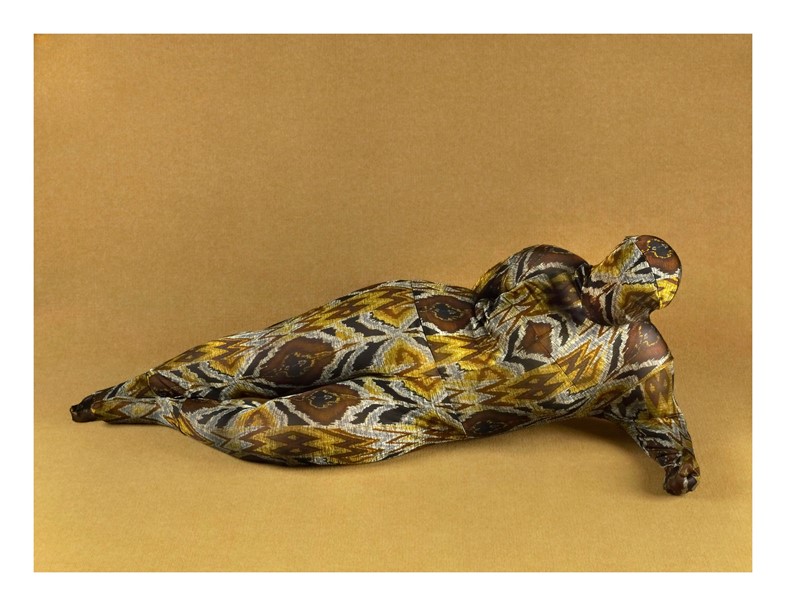
Throughout Yolaçan’s work, the materiality of the outfits becomes a reflection of the ideas within the images; in the Perishables series, garments were made from animal flesh (cow stomach, chicken skin), while still retaining the buttoned-up, reserved elegance of the Victorian era. For Mother Goddess, the use of spandex and ‘Kilim’ patterns became a better fit than Yolaçan’s initial use of tailored garments, made with linen fabrics, “because [the models’] natural figures were so much more like the actual statuettes.” For Yolaçan, these pseudo-sculptural garments exist at what they call a crossroads, “sort of like Leigh Bowery meets hijab. Venus of Willendorf meets Henry Moore.”
One thing that vanishes among this construction – dense with both materiality and meaning – is the face of Yolaçan’s models. This forces the viewer to consider the images beyond the way they might look at a more traditional photograph – the lack of a model’s face removes one of the common ways of interpreting, or empathising with, a photo. Instead, one can look at these images in the context of historical objects, their own cultural norms and expectations, and see how much things have changed between the creation of the pre-Neolithic statues that inspired Yolaçan, to the creation of Mother Goddess, to this moment time.
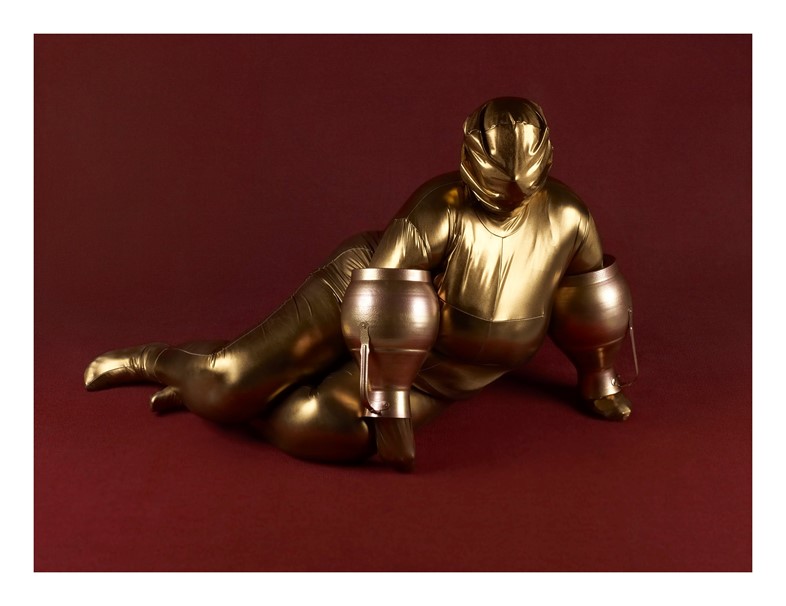
The Venus of Willendorf, a pre-Neolithic statue of a fertility goddess is invoked in Yolaçan’s work, continuing a long conversation with the figure in feminist art – Yolaçan namechecks artists Mary Beth Edelson and Judy Chicago. By re-framing these images from antiquity in the contemporary bodies of real women, Yolaçan challenges the ways in which we perceive not only art history but contemporary art and the role the body plays within it. This unexpected move towards ideas of inclusion and body positivity was not on Yolaçan’s mind when first making this work 15 years ago, although they seem glad that the series has taken on this new dimension. “The discussions around body positivity are healthy I think,” they explain. “It did not impact how I see the work but now hopefully it will impact the way other people see it.” Yolaçan wonders if this new way of looking at the work – and at these bodies – is “perhaps to monumentalise female farmer’s bodies which are historically other-ed and abject-ified. It’s radical and needed at this time.”
For Yolaçan, the Mother Goddess series has always felt like a reflection of home, of embracing bodies that were not the Western norm. While they say that the world might be “as patriarchal as ever,” the shifting ways in which we might relate to Yolaçan’s work gives us the possibility of “a new generation questioning gender and capitalism.” By continuing to engage with the legacies of how art has approached women’s bodies, Yolaçan is able to consider the limits of these representations, offering alternative ways of seeing, liberating their subjects from histories of objection, and finding a way forward towards agency and liberation.
Mother Goddess by Pinar Yolaçan is published by Baron Books, and is available for pre-order now.


